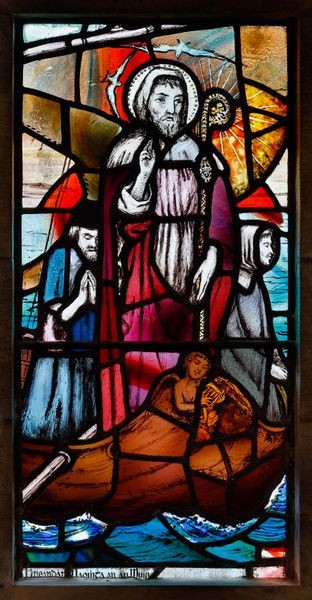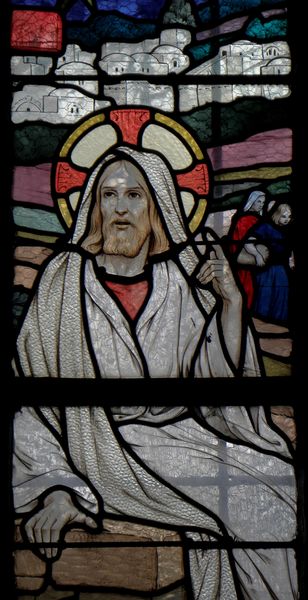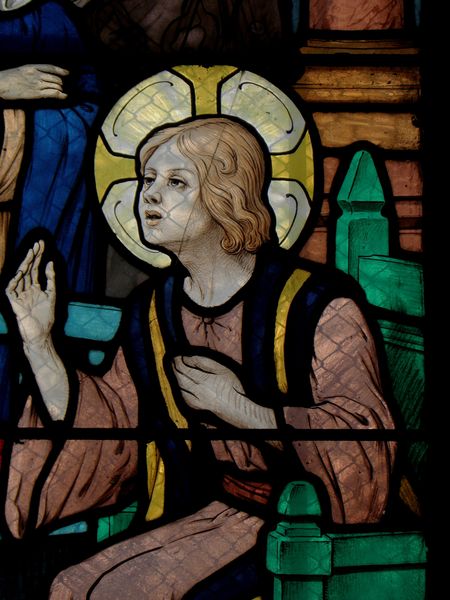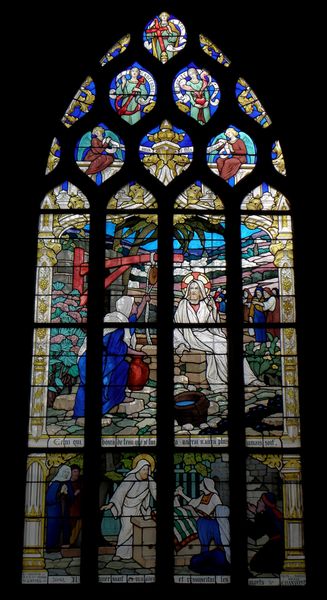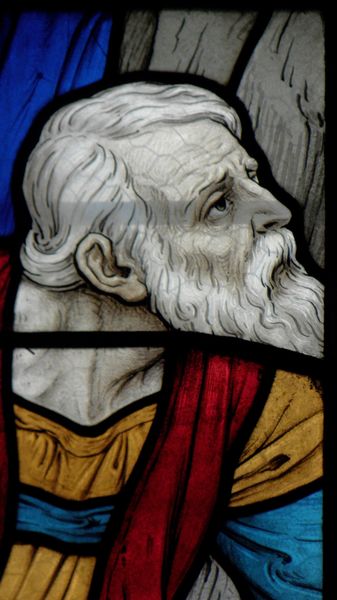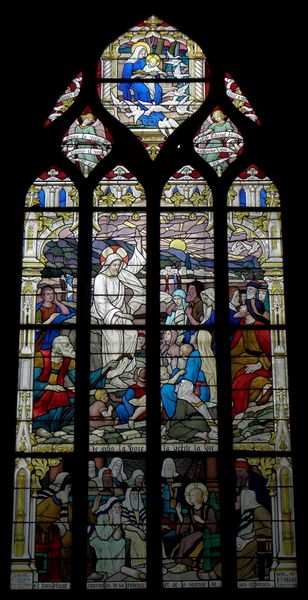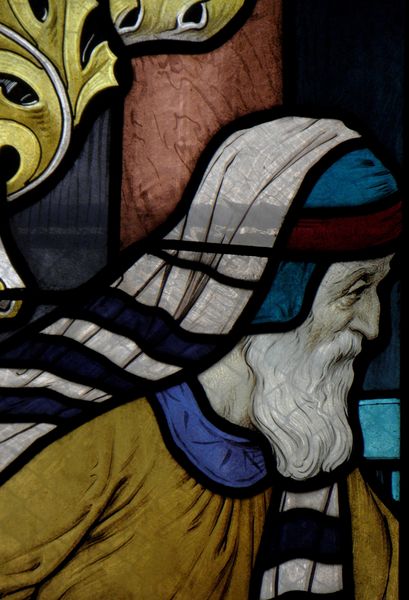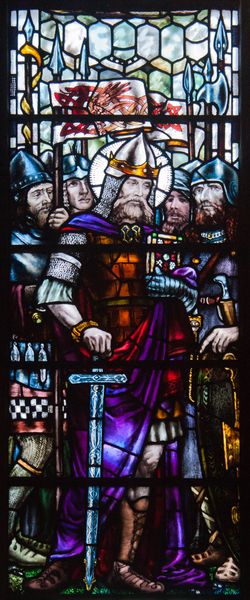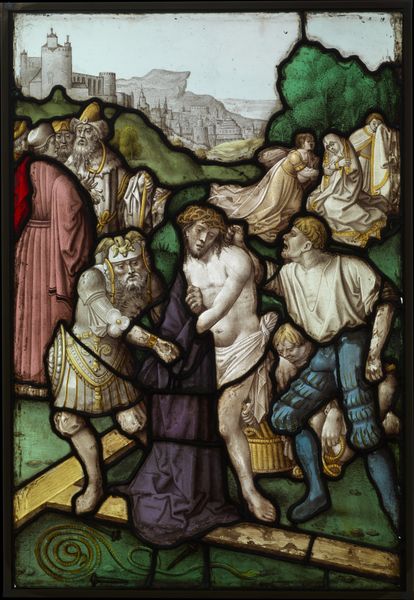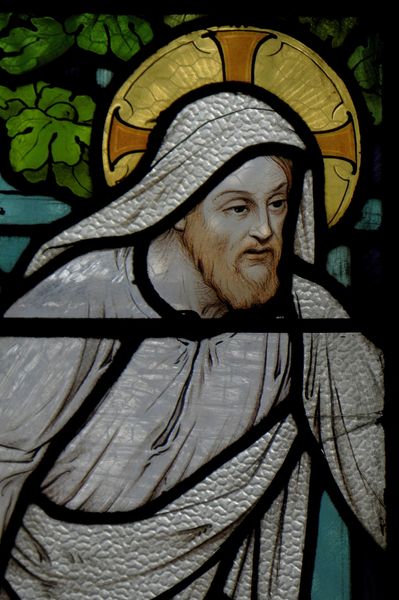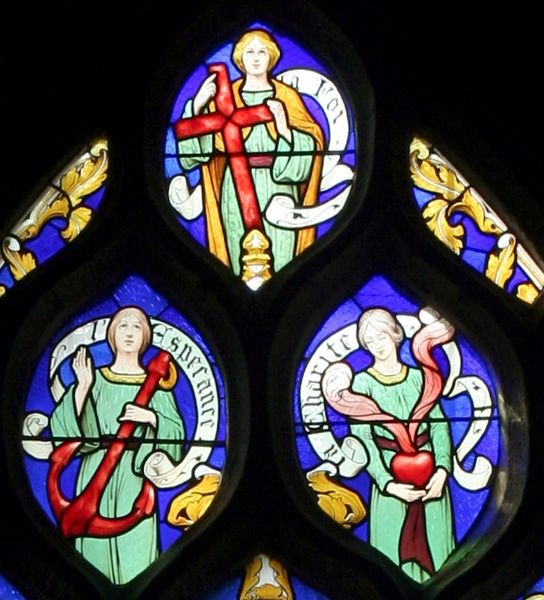
glass
#
figuration
#
glass
#
history-painting
Copyright: Public domain
Editor: Here we have Sarah Purser’s stained glass depiction of ‘Saint Eunan,’ created in 1906. The artwork is quite striking; I'm immediately drawn to the elongated form and the rich colours. How would you interpret this piece from an art expert's point of view? Curator: Immediately striking is the commitment to line, defining every contour, every fold of drapery, and fragment of architectural space. This insistence on delineation lends the entire work a hieratic, almost medieval, quality. Consider, too, how colour operates—flat planes, primarily primary hues, juxtaposed to create both harmony and tension. Do you perceive any departure from naturalistic representation? Editor: I do see that. It seems the purpose is not realism, but something more…symbolic, perhaps? The rendering of the figure seems stylized to emphasize verticality. Curator: Precisely. The elongated form is not accidental, as is its spatial relationship with the text above and the decorative arch that surmounts it. The composition is one of layered geometries – squares, rectangles, arched lines—creating visual balance and, equally important, a sense of upward momentum. This layering and balance creates an upward trajectory and reinforces the spiritual narrative embedded within. The flatness in this figuration—the deliberate rejection of depth and volume in favour of the surface is an intriguing choice, indeed. Editor: It is intriguing. I had initially only noted its decorative beauty, but considering your description, it seems to work on several structural levels. Curator: Indeed. Reflect on the material itself, too. Glass has specific reflective qualities and refracts light. In its placement in a church setting, the visual impact must be augmented by these innate properties of light and illumination. The whole piece becomes much greater than the sum of its already significant parts. Editor: This has given me so much to consider. I was overlooking the architectural role of stained glass, as well as how colour, light, and shape contribute to a rich spiritual interpretation. Curator: And by examining those forms, colours, shapes, and especially the light afforded by the medium itself, we find layers that escape only thematic interpretations. The piece holds considerable formal strength as an object on its own.
Comments
No comments
Be the first to comment and join the conversation on the ultimate creative platform.
